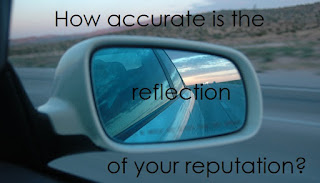I specialise in Reputation Marketing – and I have to admit
that, whilst I passed an exam in Marketing many years ago, I don’t cover the
whole marketing spectrum. However, most
small business owners consider marketing is about making yourself visible.
This might be with your website, print ads, radio
interviews, social media, blogs, newsletters, press releases, magazine
articles, flyers, exhibition stands, conference presentations and
brochures. Not all of these work for
everyone – so your first step to a good marketing plan is to work out what your
target audience is most likely to respond to.
Some of these media cost money, some take time and effort,
so you need to put your budget for both of these in place beforehand. It’s no good planning an in-depth blogging
and social media campaign if you are too busy to invest that time – unless
you’re able to outsource this to someone who understands your business and your
audience and can deliver content in your voice.
The Voice
This is important – your business has a voice. If it’s just you – it probably is a version
of you, but the bigger the organisation gets the harder it gets to maintain a
personal approach. Your organisation’s
voice and style needs to be reflected in every piece of marketing that goes
out.
When it IS just you that’s easier, because you almost
certainly walk the talk. The challenge
is when other people come on board – they need to understand what’s OK and
what’s not. Even if they’re not your
spokesperson, people meet new people all the time, socially and in business
networking. They need to represent you
as you want to be seen.
If someone says to them “Where do you work?” what do you
want them to say about your organisation?
Can you be sure they won’t say something negative? We’ve all heard people talking about their
bosses in less than favourable terms.
The Style
There’s an argument that what works on Facebook or Twitter
won’t cut it in an industry journal, which is a more formal environment. However, I believe that you shouldn’t be
someone you aren’t in any environment.
Using business language, whether informal or more formal is
still important. There’s nothing worse
than a business that publishes text speak, bad language, poor English (or any
other language) or less than respectful content.
If you’re in a fun and funky business that doesn’t mean your
marketing should sound like a rapper or use bad English and lots of slang. If you’re a serious organisation it doesn’t
mean that you have to come over as a faceless corporate.
The Message
Consistency is the key.
Even when you’re promoting different aspects of your business, you need
to stay focused on your core message. In
reality all your material should look as though it belongs together.
Be clear, be concise and be to the point.
If you get all this right your marketing will work well to
raise your profile and reach the people who want what you’re offering.
















